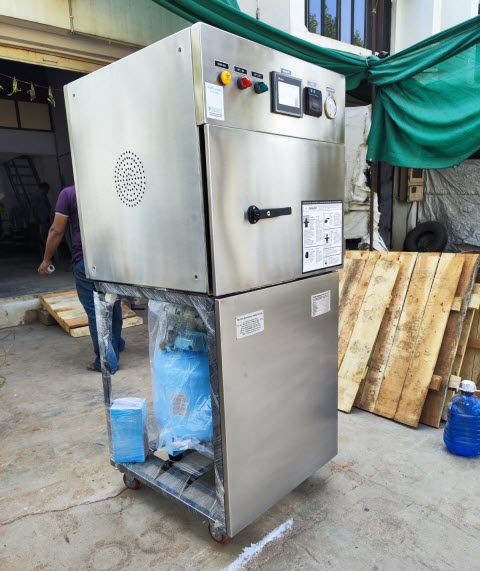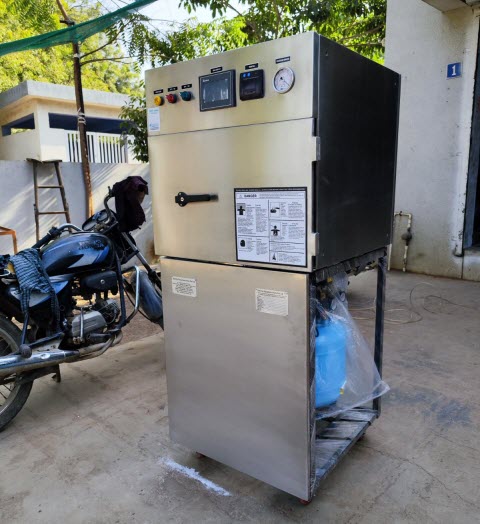Table top ETO sterilizers are compact devices used to sterilize medical equipment, such as surgical instruments, catheters, and endoscopes. These sterilizers utilize ethylene oxide gas, a powerful sterilant, to eliminate bacteria, viruses, and other microorganisms from the surfaces of the instruments. Table top ETO sterilizers are commonly found in medical clinics, dental offices, and small healthcare facilities where a smaller volume of equipment needs to be sterilized.
Validation Process
The validation process for table top ETO sterilizers involves a series of tests and documentation to ensure that the sterilizer consistently delivers the desired level of sterility. The process consists of four main stages: initial qualification, installation qualification (IQ), operational qualification (OQ), and performance qualification (PQ).
During the initial qualification, the sterilizer is evaluated to determine its suitability for the intended purpose. This includes reviewing the manufacturer’s specifications, confirming that the sterilizer meets safety standards, and assessing its compatibility with the facility’s infrastructure.
The IQ phase involves verifying that the sterilizer is correctly installed and meets the required specifications. This includes checking electrical connections, ventilation requirements, and the presence of necessary safety features. The IQ documentation provides evidence that the sterilizer has been installed correctly.
The OQ stage focuses on testing the sterilizer’s operational parameters. This includes assessing the sterilization cycle’s temperature, humidity, pressure, and exposure time. The OQ documentation demonstrates that the sterilizer consistently operates within the defined parameters.
The PQ phase evaluates the sterilizer’s performance by conducting a series of validation runs using biological indicators. These indicators, typically containing known populations of resistant microorganisms, are placed in various locations within the sterilizer to assess the effectiveness of the sterilization process. The PQ documentation confirms that the sterilizer consistently achieves the desired level of sterility.

Regulatory Compliance
Table top ETO sterilizers are subject to various regulatory requirements to ensure patient safety and product efficacy. The following are key regulatory considerations for compliance:
1. FDA Regulations
In the United States, the Food and Drug Administration (FDA) regulates table top ETO sterilizers. The FDA provides guidelines and requirements for the validation, operation, and maintenance of these devices. Manufacturers and healthcare facilities must adhere to these regulations to ensure patient safety and product quality.
2. ISO Standards
International Organization for Standardization (ISO) standards also play a significant role in the validation and compliance of table top ETO sterilizers. ISO 11135:2014 specifies the requirements for the validation and routine control of ethylene oxide sterilization processes. Compliance with ISO standards ensures that the sterilization process is consistent, effective, and safe.
3. Other Regulatory Considerations
Apart from FDA regulations and ISO standards, healthcare facilities must also consider other regulatory factors, such as local and regional regulations, guidelines from professional organizations, and any specific requirements from regulatory bodies governing medical equipment and sterilization processes.

Best Practices for Operating Table Top ETO Sterilizers
To ensure the safe and effective operation of table top ETO sterilizers, healthcare facilities should follow these best practices:
1. Equipment Maintenance and Calibration
Regular maintenance and calibration of the sterilizers are essential to ensure their proper functioning. This includes routine inspections, cleaning, and servicing of components, such as filters and gaskets. Calibration of temperature, pressure, and humidity sensors should be performed at specified intervals to maintain accuracy.
2. Monitoring and Documentation
Continuous monitoring of sterilization cycles is crucial for identifying any deviations or abnormalities. This can be achieved through the use of automated monitoring systems that record parameters such as temperature, pressure, and exposure time. Accurate and detailed documentation of sterilization cycles, including cycle parameters, load contents, and biological indicator results, should be maintained for traceability and audit purposes.
3. Safety Measures
Table top ETO sterilizers work with potentially hazardous substances. It is important to follow appropriate safety measures, such as using personal protective equipment (PPE) when handling ETO gas, ensuring proper ventilation in the sterilization area, and implementing proper waste management procedures for ETO-related waste.





